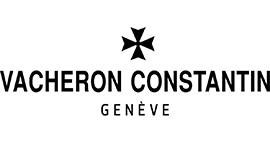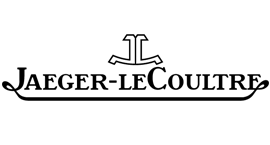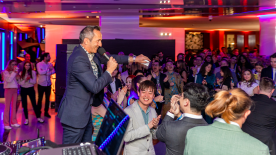Exploring the various iterations of modern, fine craftsmanship through the work of some of Europe’s best artisans and designers, Homo Faber: crafting a more human future [Editor's note: 14-30 September] taps into that “single undercurrent” - in the words of Johann Rupert, chairman of the luxury group Richemont – that connects all that “human beings can do better than machines.”

Through Sep. 30, a quick vaporetto ride from the Palazzo Ducale across the lagoon, Homo Faber is deployed at the Cini Foundation on San Giorgio Maggiore, one of the islands of Venice, in a sprawling exhibition spread over 4,000 sq. meters of space on the site of a 16th-century monastery divided into 16 pavilions and a drained swimming pool.
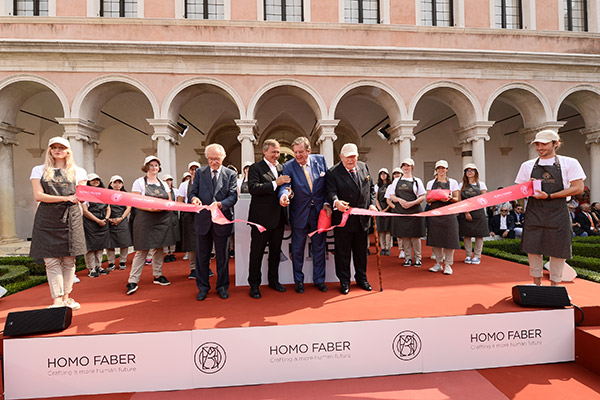
At the preview last Wednesday (Sep. 12), visitors marveled at exquisite objects that ran the gamut from a miniature watch movement, a leather-upholstered Vespa, a straw-encrusted couture jacket or a feather-wound bonsai tree, forming a spectacular ensemble that suggested less a walk down memory lane than a journey into the boundless imagination of man guided by the ingenious hands that feed today’s luxury sector.
A Master of Miniaturization
In the pavilion titled “Discovery and Rediscovery,” the watchmaker Jaeger-LeCoultre, one of Richemont’s maisons, demonstrates its mastery of micromechanics, in a booth dedicated to the history and evolution of its Caliber 101, the world’s smallest mechanical movement.
Inspired by the legendary Duoplan movement developed by Jaeger-LeCoultre in 1925, Caliber 101 created in 1929 measured 14 mm in length, 4.8 mm in width, and only 3.4 mm in thickness. “The first wristwatches integrated a watch’s mechanism in jewelry for women,” said Stéphane Belmont, heritage director at Jaeger-LeCoultre, on site to share anecdotes and a few know-how secrets.
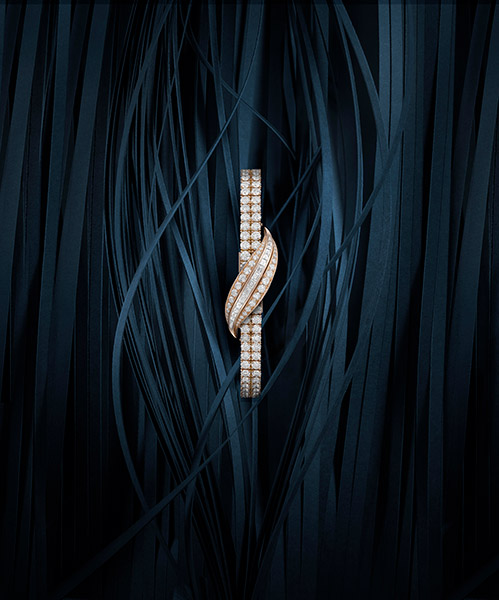
“Elegance and sophistication in the early 20th century called for smaller watches that revealed a certain refinement in which horology took a backseat to aesthetics,” Mr. Belmont said.
The miniaturized Caliber 101 movement allowed Jaeger-LeCoultre to insert a watch inside a ring worn on a finger or in a brooch worn on a lapel, both shown in the watchmaker’s vitrines. Other historic timepieces like the Leaf secret watch with its unsuspected mechanism allowed the wearer to disguise the watch as a piece of jewelry in an era when looking at the time was viewed as tasteless.
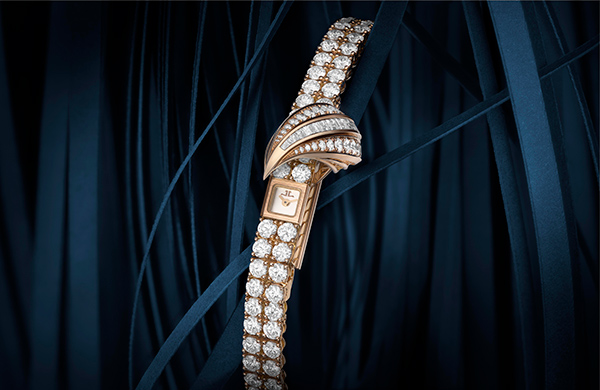
“The winding system of the Caliber 101 is hidden to liberate the timepiece from the constraints of watchmaking,” Mr. Belmont said “That was a design innovation by Jaeger-leCoultre.”
A reissued version of the Caliber 101 timepiece inspired by the historical model worn by Queen Elizabeth II at her coronation in 1953, was elegantly sported by Catherine Rénier, the maison’s new chief executive, who was also here on opening day.

“The Caliber 101 was a gift from the French president Albert Lebrun to Princess Elizabeth, a few years before her coronation in England,” Mr. Belmont said. “Protocol did not permit the princess to wear a wristwatch on that occasion, so she wore her discreet Caliber 101 watch as a bracelet.”
Watchmakers and Jewelers Honored
Alongside Jaeger-LeCoultre, other luxury watchmakers are featured in Homo Faber.
Vacheron Constantin has an artisan on site to demonstrate, under the watchful eye of Christian Selmoni, its Style and Heritage director, the art of enameling and the magic with which, after multiple layers of color and successive baking sessions, a scene from a Tintoretto painting is transposed onto an enameled watch dial.
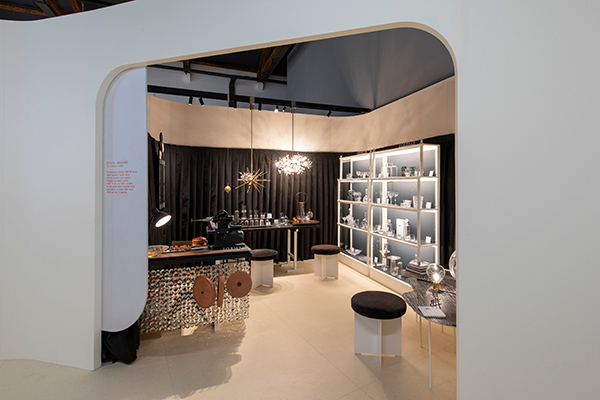
Just outside the “Discovery and Rediscovery” pavilion, moored off the island, the beautifully restored Eilean, a 1936 Scottish-built sailboat acquired in 2006 by the Italian watchmaker, Officine Panerai, welcomes visitors on board to see the artistry with which it has been reconditioned by the artisans of the Francesco Del Carlo shipyard in Viareggio, Italy. Panerai, a former supplier of professional diving instruments and timepieces to the Italian navy, has supplied Eilean’s new sailing instruments, namely a wall clock, barometer and marine chronometer, especially commissioned as part of this restoration project.
Van Cleef & Arpels is here showing the art of mystery-setting precious stones on rails.
Chanel is represented by its wholly-owned embroiderer, the Maison Lesage, responsible for some of the fashion house’s more intricate métier d’art watch dials. In Lesage’s booth, visitors can take a quick needlework lesson from a Lesage artisan and add their own beaded contribution to a large bird’s-eye view of Venice on a stretched toile.
In Defense of the Eternal
From mechanization to industrialization to artificial intelligence, machines have threatened man while easing his workload, a double-edged sword whose danger is perhaps nowhere more visible than in Venice where much of local handcraft, including glasswork from Murano, is nearly extinct, swept away by mass-produced, Chinese-made goods sold in shops all over the islands. Though locals insist that much of Venetian ancestral craft is still here, it has mostly retreated to upstairs showrooms without a storefront.
For many artisans of ancient crafts, “handmade” does not exclude using sophisticated tools.
“What made the renown of Jaeger-leCoultre, and that of Swiss watchmaking, is that we have always invented machines to produce ultra-precise components to manufacture more reliable timepieces capable for being repaired,” Mr. Belmont said. “We work with the best of modernity to create traditional objects that reflect our capacity to innovate.”
Set against the timeless beauty of Venice, Homo Faber, organised by the Michelangelo Foundation for Creativity and Craftsmanship, a private Geneva-based nonprofit entity founded in 2016 by Mr. Rupert and Franco Cologni, a former Richemont executive, aims to preserve fine craftsmanship and attract new blood to some endangered crafts.
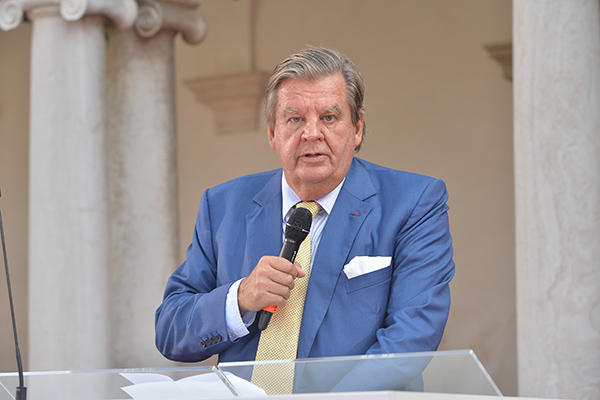
“We chose Venice not only because it is a bastion of culture and a place of unequalled beauty,” said Mr. Cologni, co-founder of the Michelangelo Foundation, “but also because Venice is today and has always been a European hub for exchange and connection internationally.”
The glorious mid-September day on San Giorgio Maggiore was an auspicious start for an event that is expected to become a biennial and could transform Venice, together with the contemporary art and the architecture biennials also held here, into a destination for both art and craft.
“We are celebrating everything that is not ephemeral,” said Alberto Cavalli, an executive director of the Michelangelo Foundation and general curator of Homo Faber, in his opening speech. “And with that, we wish you a bella giornata.”

